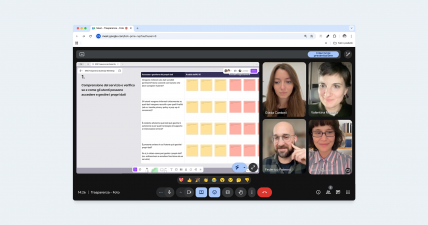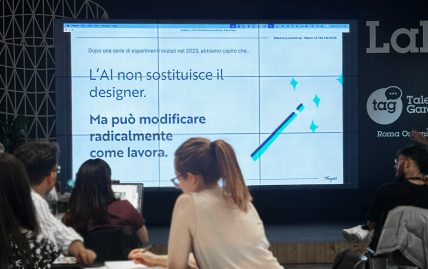Thinking
Measuring transparency: an iterative commitment
From the theory of transparency to a shared method, born from the questions raised during "Inspiration 2024" and turned into a practical tool for design projects.

When we wrote “Transparency as an impact criterion”, we were already asking ourselves: how can we truly bring this principle into projects without reducing it to a mere legal requirement?
Thanks to the insights shared by the experts who joined us during Inspiration 2024, we gathered our thoughts and reached a conclusion that had already started to take root. Transparency is much more than a paragraph in a privacy policy: it’s what allows people to trust, to understand how their data is used, and to act accordingly. Yet, in the fast pace of a digital project, it often remains an afterthought.
That’s why we created a dedicated workshop - a space to measure the transparency of an experience, discuss critical touchpoints, and co-design practical improvements. A moment to turn theory into practice, together with designers, legal experts, and business stakeholders. A set of questions to ask from day zero of a project.
Why we created this workshop
In our daily work, we often see the same challenges: long and dense privacy notices, pop-ups that interrupt the flow, users who accept everything without reading just to “move on”.
In more complex services, the situation gets worse, models and automation often remain opaque, hard to explain even for those who designed them.
A transparent design is a key factor in building trust: it allows users to make informed decisions and feel safe while using digital products and services.
Too often, transparency is treated as a box to tick at the end of a project: a link in the footer, a legal document updated at the last minute.
But when that happens, we lose the opportunity to build trust and design more conscious experiences.
This workshop was created to shift the perspective: to bring transparency upstream in the design process, sparking conversations among designers, product owners, legal teams, and business stakeholders.
Its purpose is to assess the most critical touchpoints together, understand where users really need information, and find ways to make that information clear and respectful of their experience.
How we structured it
To shape the workshop, we started from a simple set of guiding questions, such as:
- Do users have easy access to their data and the ability to manage it without friction?
- Does the business handle user data appropriately for the service provided?
- Are the most relevant and critical pieces of information clearly presented and understandable within the designed interfaces?
- Is there an open dialogue with the client’s legal advisors to resolve doubts or respond to specific requests?
After several brainstorming sessions, we realized these questions could each become a section of the workshop, corresponding to a specific area of analysis.
To evaluate each area in more depth, we created a set of more detailed, vertical questions.
For example, in the section “Understanding the service and verifying whether and how users can access and manage their data”, some of the questions are:
- Are only the necessary sensitive data collected, and are they consistent with the user’s intended action?
- Are users clearly informed about which data are collected and for what purpose (e.g., via privacy policies or consent pop-ups)?
- Is it evident which data users can manage autonomously and which require support or third-party intervention?
- Is there an area where users can manage their data? If so, is it clear how to do it (e.g., subscribe or unsubscribe from a service)?

We set a few guidelines - not too restrictive - to avoid limiting the early exploration phase.
It’s important to use these questions from the very beginning of a project, then revisit and update the answers along the way.
Start by filling in the answers yourself: not all of them will have a clear response, and that’s normal. The reasons can vary: the relationship with the client, the project’s maturity, or other factors.
Before involving the client, fill in what you can. Then, invite their stakeholders to validate and complete the board.
They’ll likely be more engaged if the activity feels focused and time-efficient.
Want to try the first version?
Just like our workshop on AI, we decided to share this one openly with the community.
Our goal is the same: to spark questions, build dialogue, and raise collective awareness around these topics.
It’s an evolving tool, one that will continue to grow as we use it and collect feedback.
Because transparency is a continuous process of learning and refinement, essential for building trust and empowering people to understand and participate.
If you want to test this exercise with your team, here are a few ways to get started:
- Pick an active project that involves, for example, users’ personal data management or a service that includes sales and specific terms of service.
- Start answering the questions, or just the ones most relevant to your project, and gather the potential improvement actions you identify.
- Discuss them with your team and figure out how to move them forward: do you need someone external to the project team? What resources or time will it require?
And if you’d like to share feedback or results, we’d love to hear from you and keep growing this tool together.


